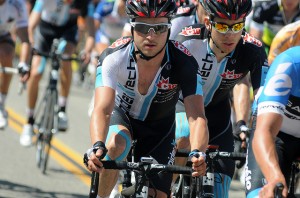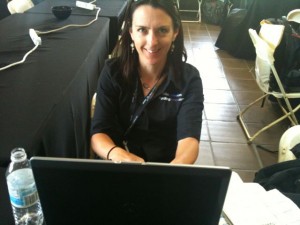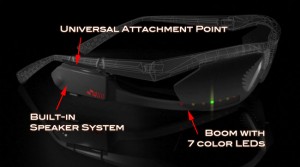The athlete-motivation application world got a jolt Monday when news broke of a lawsuit being filed against Strava.com, in part alleging that the results-comparison site caused a rider to push himself too hard, resulting in an accident that killed him.
This San Francisco Chronicle report (scroll down, it’s the second item) has most of the details — which stem from an accident two years ago when then 41-year-old William “Kim” Flint lost control of his bike while going approximately 40 mph in a descent on an East Bay road. Here’s a quick snippet quoting the attorney from Flint’s family, who is filing the lawsuit:
“If they are going to host events, give away prizes and draw in users to get the fastest times, then someone should at least come out and see that the routes are safe,” said Susan Kang, attorney for the family of William “Kim” Flint, the 41-year-old electrical engineer who died in the bicycling accident June 19, 2010.
Kang says Flint was “obsessed” with the bike-times website maintained by Strava Inc., the company being named in the lawsuit. He had learned the night before he died that someone using the site had beaten his record “King of the Mountain” time on the same hill, she said.
We’d never looked closely at Strava.com before but the site and its challenges seem pretty popular — certainly at the front of a marketplace just getting started, where weekend warriors can “compete” using recorded times on known routes, all done via GPS and device wonkery. But are some Strava.com users getting out of control, breaking laws and endangering lives in trying to become virtual champs? The latest twist in this scenario, according to the SF Gate report, is that Chris Bucchere, the cyclist charged last week with felony manslaughter (for running down a 71-year-old man in a crosswalk) was also trying to beat a Strava.com record.
We haven’t yet reached out to the company for comment yet, but on the company blog, Michael Horvath (who is referred to as Strava.com’s “fearless leader”) had a post Monday that seemed to answer the lawsuit obliquely: Titled “Stand With Us,” the blog post started with what seemed like a it’s-not-our-fault disclaimer that may or may not mean much to a judge and jury. Here’s the top of the blog post:
Each and every day we strive to improve Strava for you the athlete. We are athletes too, just like you. As the Strava community grows, we all need to follow a few simple guideposts to ensure that Strava’s impact is positive.
This is what we, the Strava community, stand for:
We know the rules. Laws and rules are created for our protection. Cycling, running and swimming are inherently dangerous and following the law, and common sense, when it comes to traffic, weather, or conditions, reduces our odds of getting hurt or hurting others. It’s as simple as that.
The blog goes on to talk about resting and honoring sportsmanship (aka, no cheaters) and ends with this line: “If you want to be part of the Strava community, we’d like you to stand with us and take these guideposts to heart.”
Something tells us that if lawyers are getting involved, it’s not going to be as simple as a statement on a blog to prove that Strava.com’s competitions didn’t cause harm. Or that the bad apples aren’t a part of the Strava.com community. There are going to be many who decry the lawsuit as some part of a nanny-state weirdness, but there is probably some legitimate question to be asked whether or not a site that promotes virtual competitions on real streets and trails is responsible for the participants’ actions, much in the way a 10K race must take out insurance to cover its runners. I have a feeling this may be the tip of the iceberg for such sites like Strava.com. It’s something we’re going to watch closely.
UPDATE: There’s a new blog post on the Strava.com site, with some new terms of service that appear to include language that basically says “you can’t sue Strava.com” if you happen to say, die or kill someone else while you are trying to beat your best time. Interesting language, no?













